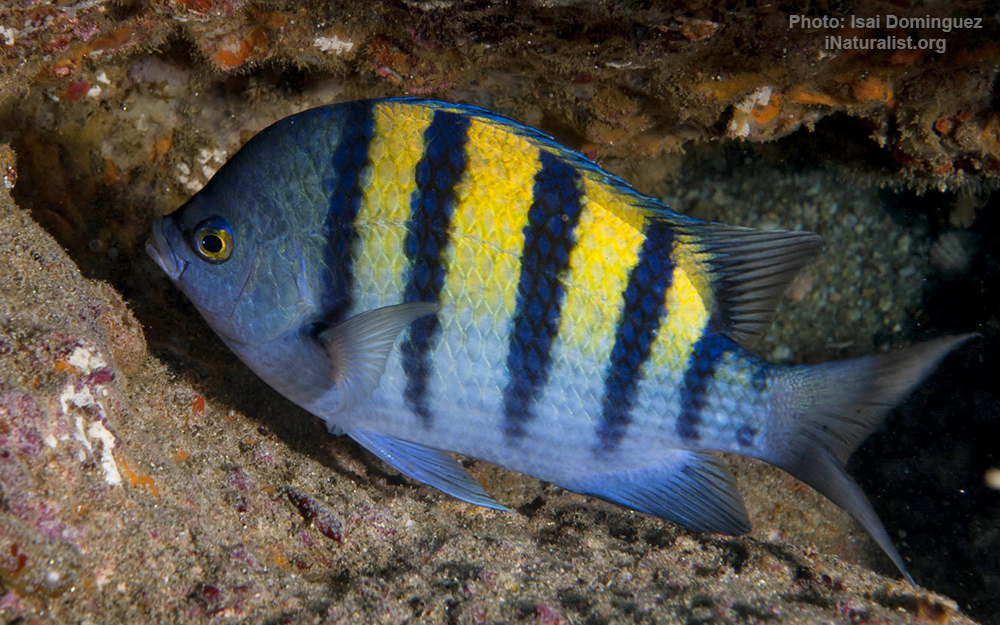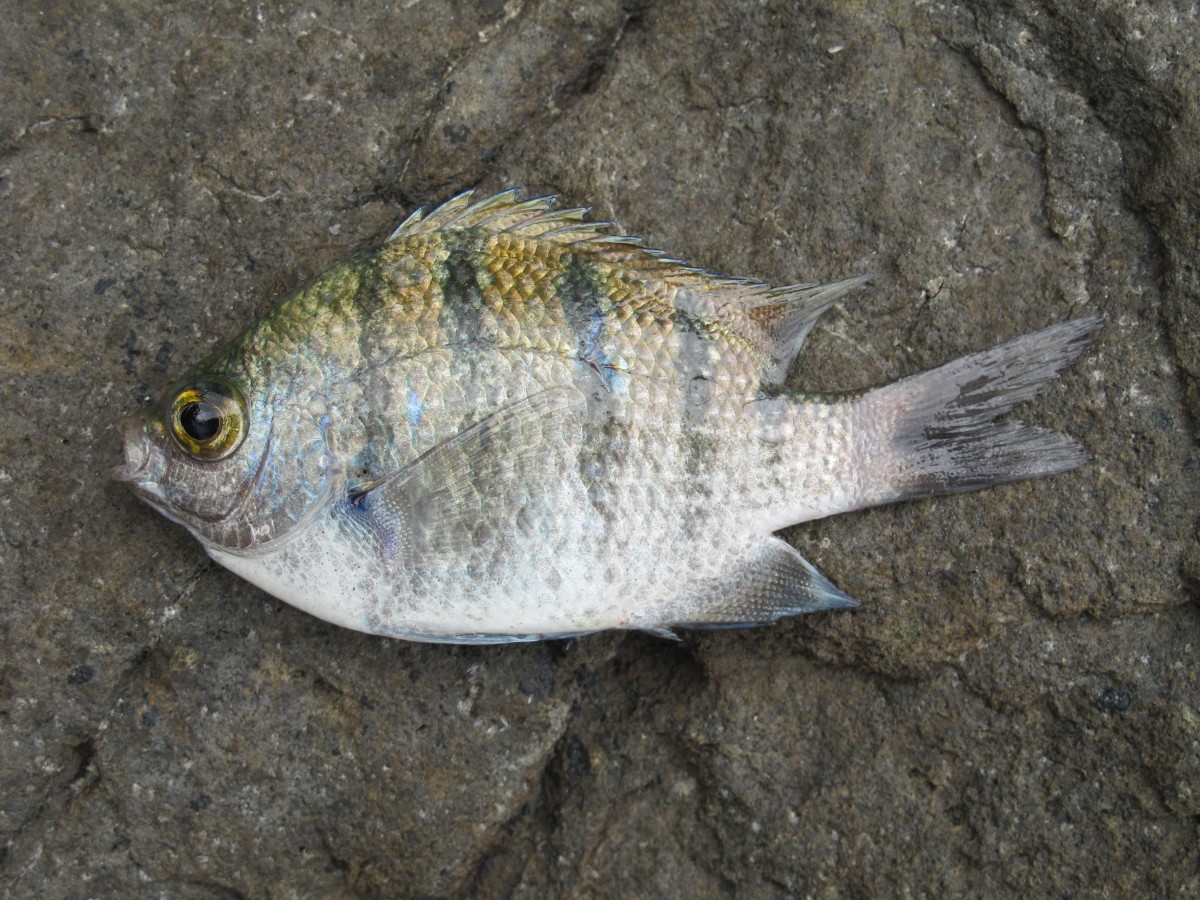Panamic sergeant major
(Abudefduf troschelii)

Classification
General data
Abudefduf troschelii, the Pacific sergeant major or Panama sergeant major, is a species of damselfish belonging to the family Pomacentridae that can be identified by the pronounced black stripes on the lateral sides of the fish.
It is native to the neritic pelagic zone of the shallow water coral reefs in the Eastern Pacific Ocean and they are an omnivorous species feeding on plankton and algae attached to their coral habitat.
Abudefduf troschelii is a sister-species of A. saxatilis but have diverged from each other since the uplift of the isthmus of Panama, separated by the rise of the Panama land bridge 3.1 to 3.5 million years ago.
Males, like in many other marine species, take care of and defend newborn A. troschelii after they have been hatched by eggs from the female.
There are currently no major threats to the species and there is no indication of a current decline in its population size.
Physical characteristics
Abudefduf troschelii have five dark bands on the lateral surfaces of the body with dorsal yellow spaces in between. These dark bands spread towards the ventral side of the fish creating black stripes. This eye catching coloration of the fish is one of the reasons that they are popular aquarium fishes. Their pectoral fins are lengthened, slender, and paddle-shaped allowing them to swim fast and change direction quickly around coral reefs. This is a common morphology among coral reef living fish. These pectoral fins are structured with a long, straightened hydrodynamic leading edge, and a rounded hydrodynamic trailing edge allowing them to easily maneuver around pieces of rock and coral. Compared to other damselfish, A. troschelii have relatively large eyes, and a long angular shaped head. The mouth of this species is located in a higher position on the frontal side of the fish compared to other damselfish, allowing A. troschelii to successfully feed on suspension floating plankton in the oceanic pelagic zone.
Max size: 20 cm
Habitat and distribution
Abudefduf troschelii are found widely throughout the Eastern Pacific and are endemic to this area. They are commonly found in Colombia, Costa Rica, Ecuador, El Salvador, Guatemala, Honduras, Mexico, Nicaragua, Panama, Peru, and the United States to name a few. In these places, this species is abundant in coralline and sandy bottoms, but they can also be found at rocky bottoms and tide pools where they are usually found in large aggregations. Furthermore, this species can be found in the pelagic area of the neritic feeding on plankton. This neritic area where A. troschelii are commonly found, is made up of massive corals, deep rocky walls, and shallow exposed reef.












